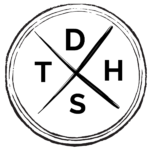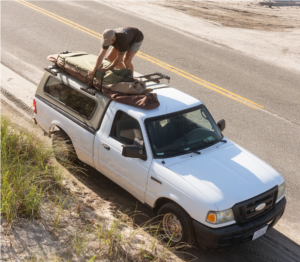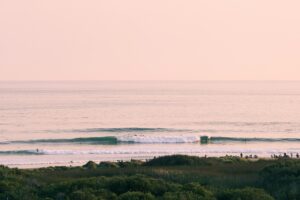Solid glassy lefts, dirt roads, minimal crowds, and beautiful scenery. Just a handful of ways to describe surfing in southern Chile. With hundreds of miles of coastline, the potential for surf is infinite.
Drive along this wild and rugged coast, and you’ll pass numerous headlands, all with the potential for epic surf on the right swell. Southern Chile is also never short of swell, and during winter, 8-10ft corduroy is not uncommon.
As long as you don’t mind putting the hours in on the road, pulling on a wet wetsuit, and the freezing temps, Chile is the adventure surf trip of a lifetime. So let’s dive in and find out everything you need to know about the area…
Overview
- Pumping left points
- Consistency
- Uncrowded
- Beautiful scenery
- Cold water
- Long drives between spots
Table of Contents
Best Time to Surf in Chile
The best season to surf in southern Chile is during Autumn/Spring. While the biggest swells happen in Winter (May-August), these shoulder seasons often come with solid swells and lighter winds. While summer still has waves, the best breaks are much less consistent!
Southern Chile Surf Spots
Southern Chile has a wealth of epic surf spots; you only need to open Google Maps to discover the potential. I won’t name all the spots here as I’ll let you go on your adventure, but here are some of the more well-known spots…
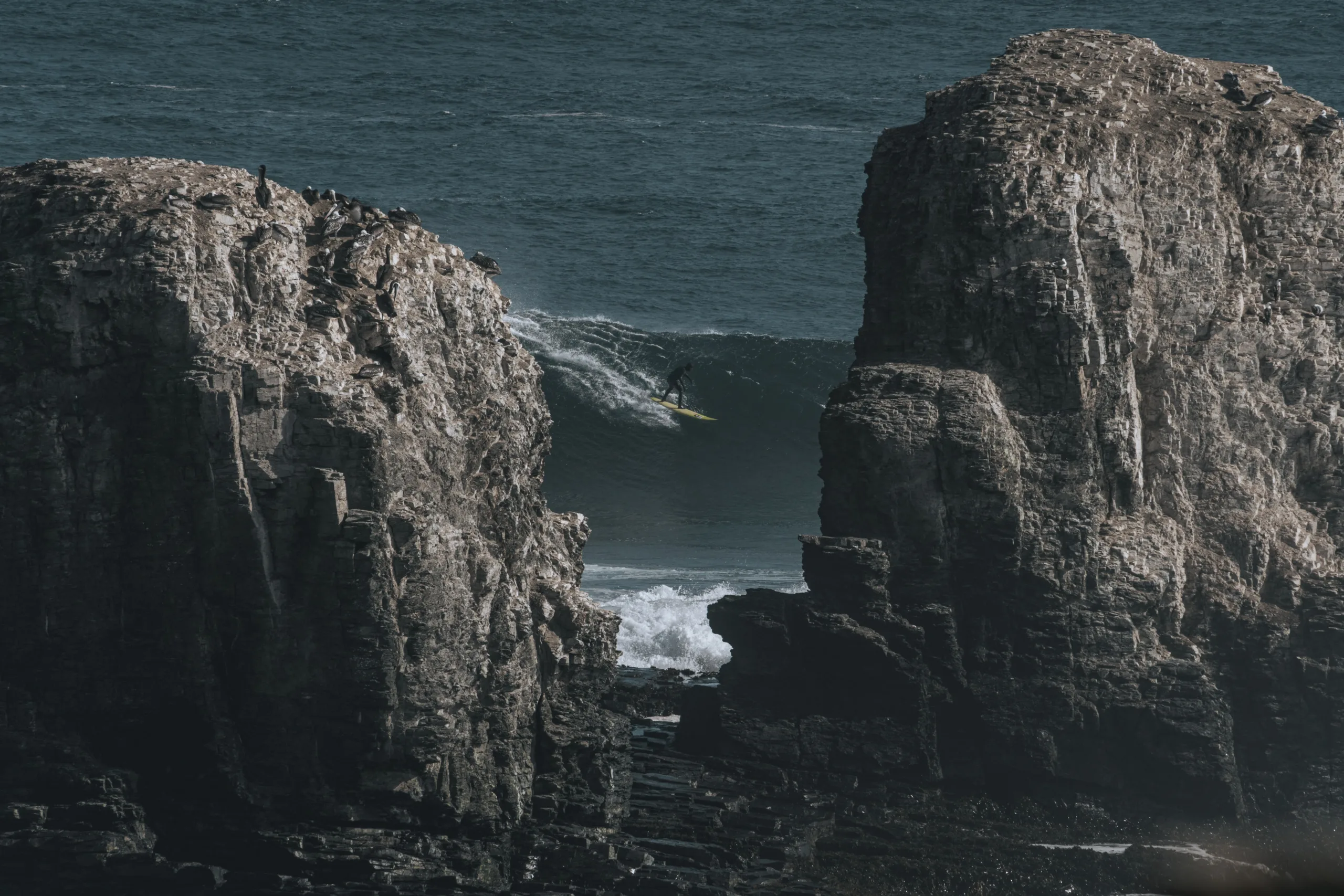
Punta De Lobos
The most famous surf spot in Chile! Situated on the edge of Pichilemu, Punta De Lobos frequently receives solid swells, and the cliff is a safe and awesome spot to watch hard-charging 10ft board-toting chargers ride such waves.
On smaller days, things get more user-friendly, and the point transforms into a long, easy (ish) to surf left that meanders down the point. A super fun wave for all abilities.
- Crowds: Busy
- Best Swell: 2-20ft West
- Best Wind: Offshore (East)
- Wave Type: Left point
- Consistency: 90%
- Hazards: Big waves, rocks
La Puntilla
Another left point in Pichilemu; incredibly long and a super fun wave. Despite this, the wave is pretty fat and always fatter than it looks from the beach.
- Crowds: Uncrowded
- Best Swell: 4-6ft West
- Best Wind: Offshore (East)
- Wave Type: Left point
- Consistency: 70%
- Hazards: Big waves, rips
Puertecillo
An hour north of Pichilemu lies the small town of Puertecillo, hosting a fun, playful sand-bottomed left point. Depending on the sand bank, the waves can get good here, and although I only surfed it 2-3ft, I was alone and still had a wicked time.
- Crowds: Uncrowded
- Best Swell: 4-6ft West
- Best Wind: Offshore (East)
- Wave Type: Sand Bottom Left point
- Consistency: 90%
- Hazards: Big waves, rocks
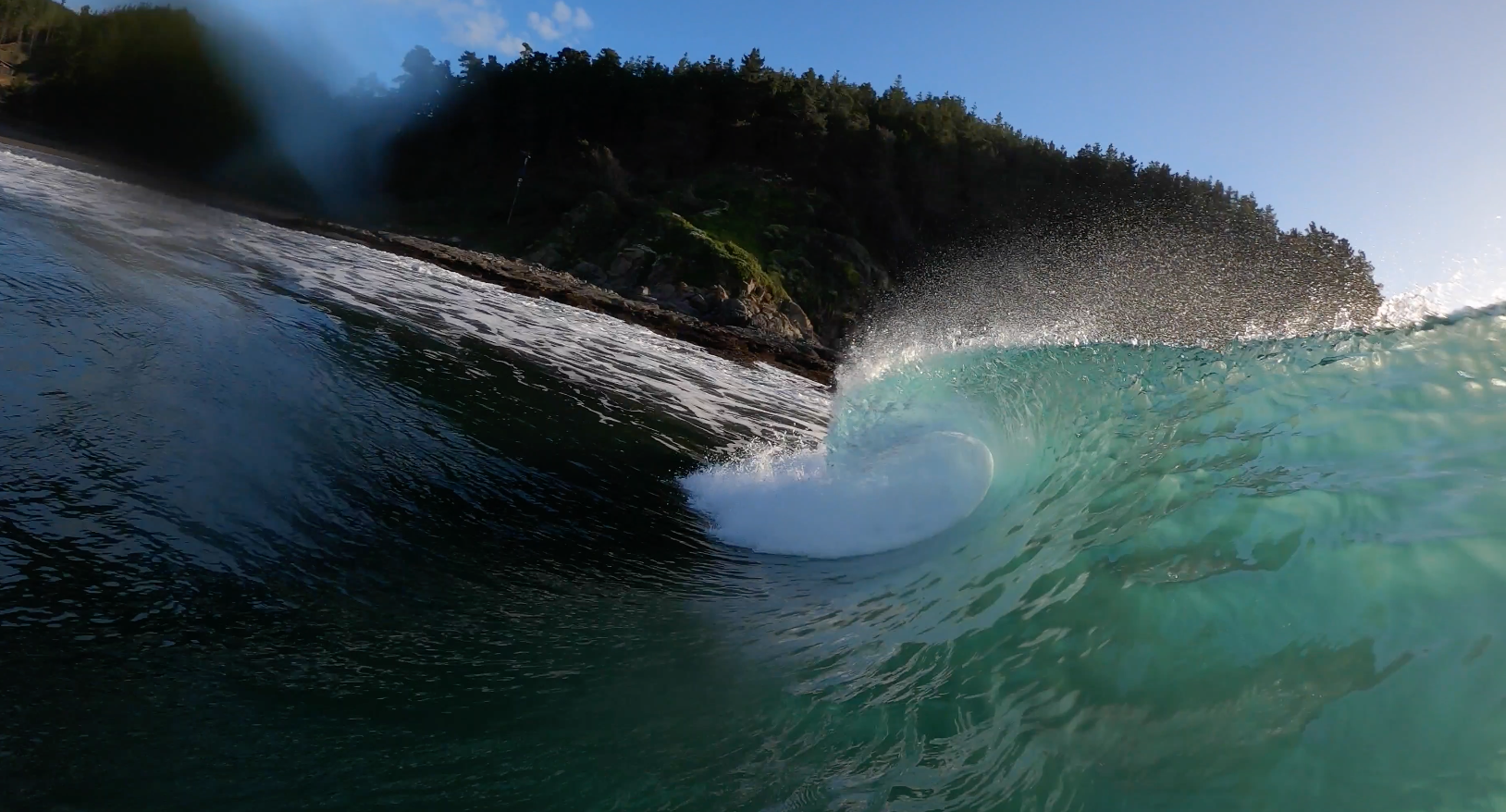
Constitucion
The city of Constitucion is 3 hours south of Pichilemu, and despite its lack of natural beauty, the coast here boasts a handful of epic waves. Head along the coastal road and you’ll pass a number of potential setups, all with their own little intricacies and personalities.
- Crowds: Uncrowded
- Best Swell: 3-4ft ft West
- Best Wind: Offshore (East)
- Wave Type: Left points
- Consistency: 90%
- Hazards: Rocks
Buchupureo
Further south is one of the jewels in the crown of surfing southern Chile. A fast, powerful left point that frequently pumps out amazing waves. When I arrived at Buchupureo, the waves were cooking and reminiscent of what I imagined Chile to be like. Glassy 4-6ft lefts, reeling down a black sand point. It was like something outta the movies. (I’m looking at you, Psychic Migrations).
- Crowds: Crowded
- Best Swell: 4-6ft ft West
- Best Wind: Offshore (East)
- Wave Type: Sand bottom left point
- Consistency: 60%
- Hazards: Rocks, shallow sand bar

Pullay
Another classic Chilean point. Sucky, sand-bottomed, and sections for turns and tubes. Pullay is what you think of when you dream up the perfect South Chile surf adventure. Access is tricky; I actually couldn’t find this wave during my trip but if you’re more patient than me, you’ll get to it!
- Crowds: Uncrowded
- Best Swell: 4-6ft ft West
- Best Wind: Offshore (East)
- Wave Type: Sand bottom left point
- Consistency: 60%
- Hazards: Rocks, shallow sand bar
Curanipe
Curanipe is a small fishing town located between Pichilemu and Buchupureo. A great place to stop for petrol and a bite to eat! There is also a super fun left point in town. An awesome wave for turns!
- Crowds: Moderate
- Best Swell: 3-4ft West
- Best Wind: Offshore (East)
- Wave Type: Sand bottom left point
- Consistency: 60%
- Hazards: Rocks, shallow sand bar
This post is part of a larger guide, so for more information on scoring waves elsewhere in Chile, check out my full guide to surfing in Chile.
Water Temperatures
In Winter (April – October), You’ll want a decent 4/3mm, boots, and even a hood. It gets cold here and you’ll need all the rubber you can get, especially in July/August. In summer, I’d suggest a 4/3mm. While things do warm up, the water never really creeps higher than 15°c.
Water temps from SeaTemperature.info and air temps from Climate Data.
South Chile Surf Spot Map
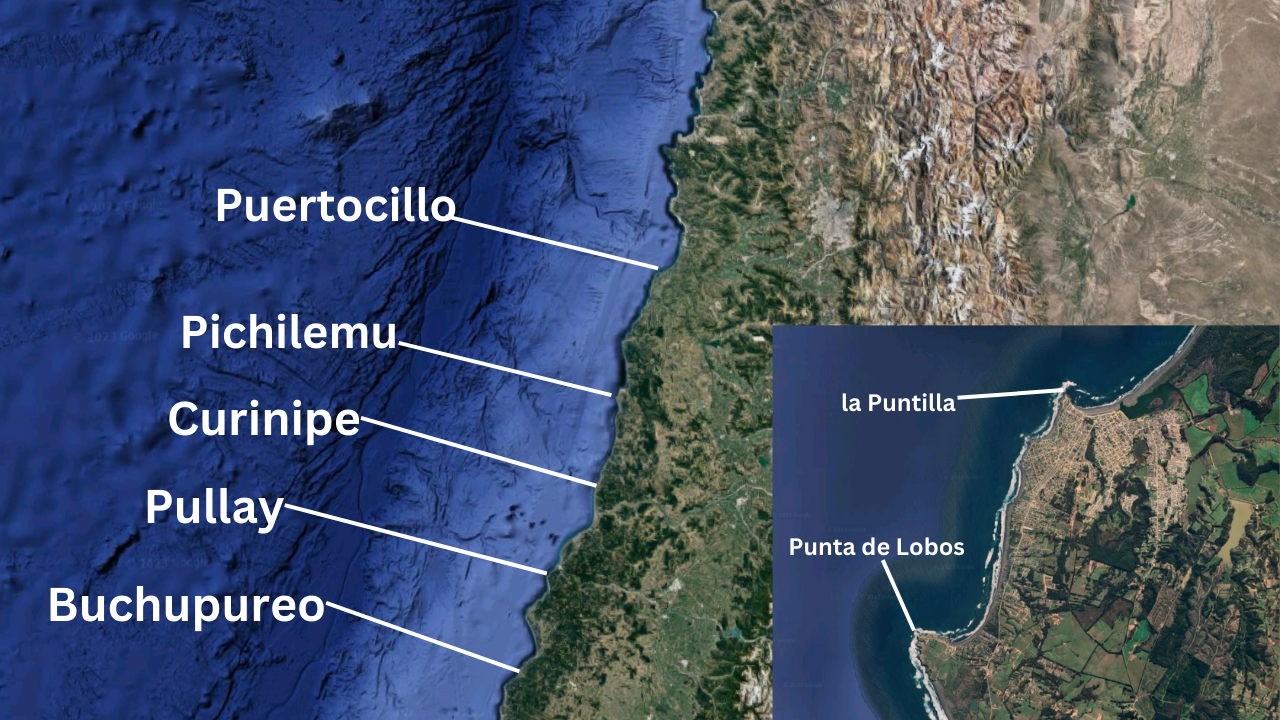
Cold water, consistency, and adventure. The ideal cold water surf adventure destination.
Where is South Chile?
Yep, I know; South Chile is a massive area (stay tuned for more specific breakdowns), but for the purpose of this post, we’ll focus on the area around Pichilemu–the area’s main surf town.
Getting Around
By Car
A car is the best way to maximize your Chile surf trip and will give you maximum wave-chasing capability. There are big distances between spots and so having the flexibility to jump between them is essential.
I’d recommend picking up a car from Santiago Airport and hitting the road from there. I hired my car from DiscoverCars.com, which is pretty much my go-to car booking site. Check out the best hire car prices here.
By Bus
Although not ideal, a trip to southern Chile is still possible without a car, and you can get buses in the area. Your best bet would be to aim for Pichilemu (south Chile’s surf hub). Take a bus from Santiago to Pichilemu and base yourself there
You’ll only be able to surf Punta de Lobos, which isn’t a bad thing, and possibly walk to other spots in town, but this is the best way you can sample the area sans car and on a budget. Check out Busbud for times and routes.

Tips For Surfing Southern Chile
Although not ideal, a trip to southern Chile is still possible without a car, and you can get buses in the area. Your best bet would be to aim for Pichilemu (south Chile’s surf hub). Take a bus from Santiago to Pichilemu and base yourself there
You’ll only be able to surf Punta de Lobos, which isn’t a bad thing, and possibly walk to other spots in town, but this is the best way you can sample the area sans car and on a budget. Check out Busbud for times and routes.
The Cold
For any surf trip in Chile, be prepared for the cold, because for the lack of a better description, it’s fucking freezing. As you head south from Santiago, things get steadily colder in and out of the water.
Bring plenty of rubber (meaning wetsuits and accessories), not of the latex kind, a warm coat, thick socks, and anything to keep you warm while getting changed in cold car parks during dawn sessions.
Driving
If you’re serious about chasing waves in the region, you’ll be doing a tonne of driving. While most of the roads are good, there are plenty of potholes and areas where the road abruptly turns to dirt.
Hire a good car, make sure you’re favorite music is downloaded, and be ready to burn some petrol. You’ll be rewarded with epic waves somewhere along the coast.
Private Roads
Turning up at some spots, you’ll be greeted with a private road sign. This only happened to me once, and I don’t speak Spanish, so I turned around. But if your heart is set on a particular spot, it might be worth asking the local farmer if you can check the surf.
Secret Spots/Locals
Due to its remoteness, many spots in the area are uncrowded, so be respectful of the locals. While surfing at one spot, I was filming using my GoPro and was told I wasn’t allowed to film. Which is understandable, as who wants a random foreigner turning up at their favorite spot with a GoPro hanging out their mouth?
Enjoying this post? You might like my complete guide to surfing in South America or other Latin America surf destinations such as everything you need to know about surfing in Costa Rica, or the ultimate guide to surfing in Florianopolis.

Where to Stay?
There are several small coastal towns you could base yourself during this cold water surf adventure. But by far, the best base is Pichilemu.
You’ll want to base yourself there, and the town offers everything you need, from great cafes and restaurants and a variety of accommodations to suit all budgets–check out the best Pichilemu hostels here.
- Dorm Price: $12 per night
- Distance from Surf: 10 minute walk to Punta de Lobos
- Wifi: Excellent (Co-work space)
This is where I stayed on my tip in September 2022! Sirene Insolente hostel, just a few hundred meters back from the point at Punta De Lobos.
The hostel is epic with super friendly and helpful staff, clean, comfortable beds, a co-working space (perfect for surfing digital nomads), and even a surf school and surf shop on site. Couldn’t recommend the place enough.
- Dorm Price: $37 per night
- Distance from Surf: 5 minute drive to Punta de Lobos
- Wifi: Excellent
Another wicked, budget-friendly surf hostel located in the heart of Pichilemu. Warm, comfy beds, friendly staff, solid location, and buffet breakfast. Just a ten-minute drive from the waves at Lobos with both private and dorms available. Learn more about Kom Hostal here.
- Dorm Price: $23 per night
- Distance from Surf: 5 minute drive to Punta de Lobos
- Wifi: Decent
For great views and a re-designed space, this newly renovated hostel is another epic place to stay when surfing in southern Chile. Located at Infernillo, Sudeste Hostal also has a workspace, pool, and terrace area to check the waves. Prices start around $23usd per night.
If you’d rather have your Chilean surf trip without the stress of booking and organizing, check out Book Surf Camps. These guys make it super easy to make your surf trip happen, under one easy booking. Many of the best surf camp packages in Southern Chile include accommodation, airport transfers, food, surf coaching, and equipment. Camps are available for all abilities.
Chile Country Information
- Currency: Chilean Pesos
- Language: Spanish
- Time Zone: GMT -4
- Visa: 3 Months on Arrival
- Vaccine: Full Vaccine Required
- Flight Times:
- LAX - SCL: 10h40
- LHR - SCL: 14h35
- SYD - SCL: 12h30
Digital Nomad Surfing in Chile?
As a digital nomad surfing base, Pichilemu can serve as a great place to score waves and work remotely. While the town isn’t as established on the digital nomad surfing map as other South American surf destinations, the town does have a handful of cool hostels and cafes to get work done between surf sessions.
Surf Schools, Lessons & Hire Shops
Final Words
If you’re looking for a true cold water surf trip, Chile is somewhere you’re guaranteed to score solid waves. Surfing in southern Chile is a cold treat and a must-do surf trip for any keen surf adventurer.
The swells are solid, the water is cold, and there are enough epic setups and potential for surf to last a lifetime, let alone one trip.
- Fly to Santiago, hire a rental car, and hit the open road.
- If you’ve got camping equipment, there are plenty of places to camp along the coast.
- For a great base with hot showers, a cool vibe, and somewhere to get some work done, check out the Insolente Hostel in Pichilemu.
For more information on surfing in Chile, check out my guide to surfing in Arica or the complete guide to surfing in South America. If you have any questions about the area, please let me know in the comments. Happy surfing!
